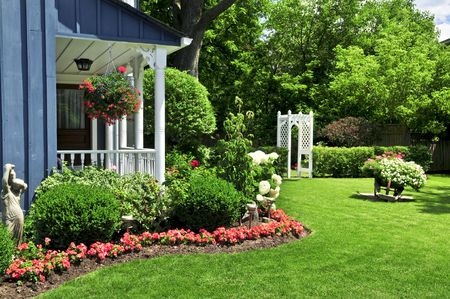Landscaping 101: Top Mistakes To Avoid

An attractive landscape offers many benefits, from increased property value to just simply loving your home a bit more, which is always a good thing considering how much time you spend there. Really overhauling your yard can be quite the undertaking, and mistakes are all too common. Here are just a few for which to watch.
This one seems kind of obvious, and may even go without saying, but it is important because it is easy to just dive into landscaping projects, overestimating how easy it is to throw together a nice looking yard. But, there are lots of things to know. Certain plants may grow better in your area. Getting your soil tested is a really good idea to see what you need exactly to make it optimal for supporting plant life. Knowing more about your local climate conditions is paramount—someone starting a garden in Phoenix will have very different considerations than someone in Colorado Springs. Take advantage of the knowledge of your local landscape material supplier –ask questions if you are unsure of anything or just get their skilled opinion.

In an effort to create an instant landscape and a ‘full’ look, there is the tendency to plant small trees and shrubs way too close together. Over time, you will create a crowded landscape, resulting in removal of some plants or drastic pruning to make enough space. Make sure you know the mature size of plants and give them time and room to grow.
Bright, beautiful foliage, fruit or flowers can really make a yard pop, and pull everything together. They are used to draw attention to certain focal points in the yard. As such, don’t scatter bright color randomly throughout the landscape. Just concentrate it in areas you really want to stand out.
Unless your yard serves no other purpose than to look pretty, it is important to consider functionality when designing it. It is easy to get caught up in the aesthetics—picking what types of flowers and what colors, accents and what have you. That is the fun part and can quickly take over. But, ultimately, function trumps form, so make sure your design lends itself to a landscape that is safe, usable and convenient.
If your yard contains less than ideal elements, such as scorching sun in certain areas, a bit too much shade or a rocky terrain, it is tempting to try and totally eradicate the issues. Sometimes this is the ticket, and the fix will serve you well, and is worth it. Example: Putting up retaining walls for slopes to fight erosion. But, in many instances, you would be better off just going with what is, rather than fighting it. Know what you’re working with, and what options are available to you.
It can be tempting to jump right into a landscaping project with grand visions of what your new yard will look like. But, be patient. Educate yourself. Carefully evaluate the property Give some thought to crafting your vision and what you really want.
